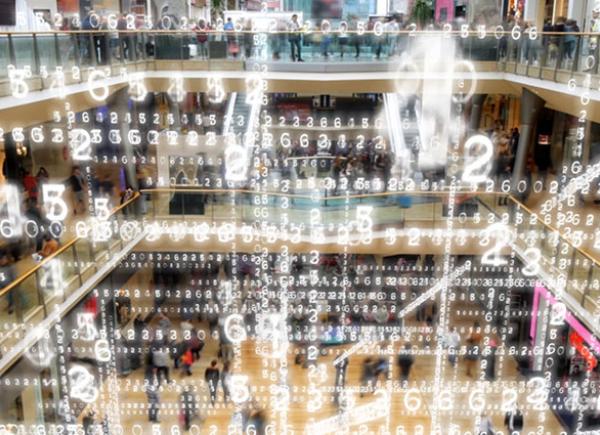What do non-bank lenders need to know?
At Envestnet® | Yodlee®, we are excited by the opportunities for sectoral expansion of Australia’s Consumer Data Right (CDR) beyond banking into open finance more generally.
On 21 November 2022, Minister Stephen Jones formally designated non-bank lending into the CDR.
Here’s what non-bank lenders need to know.
What are the first steps non-bank lenders should take to prepare for data holder obligations?
As a data holder, your IT system needs to respond to API calls to share certain datasets with accredited third parties. Those API calls can come any time of the day or night and you need a robust solution to maintain the required uptime and response speeds.
There are essentially two ways you can prepare to be compliant: either you build your own solution, or you work with a vendor who has a “Data Holder as a Service” offering. (This is not something that Envestnet | Yodlee provides, although we work closely with those vendors.)
Drawing on the experience of open banking, those banks who went down the vendor route had faster and less stressful experiences in achieving compliance and, especially for smaller banks, choosing to partner with the right vendor was a smart choice. (The same point about partnering with the right vendor also applies when thinking about becoming a data recipient.)
What are the strategic considerations around also becoming a data recipient?
To take advantage of CDR competitively – to grow and innovate – you need to have an overall data strategy and consider the competitive opportunity not just the compliance burden.
It’s understandable that the initial focus will be on compliantly sharing data out.
But the much more interesting part of CDR is getting data in and running analytics over it!
That will require non-bank lenders to choose how to access CDR data, which is currently already available for banking and energy.
To date, the most preferred routes taken by Envestnet | Yodlee’s clients have been the full Accredited Data Recipient authorisation as well as the less onerous CDR Representative pathway.
For specific use cases, we offer CDR Insights and Trusted Adviser models. Non-bank lending coming into CDR is likely to turbocharge the CDR Insights and Trusted Adviser models because of the large referral networks from accountants and brokers.
We can also help with Sponsor/Affiliate and Outsourced Service Provider access.
There’s a lot to consider when selecting the right way to access CDR data for your business model.
Envestnet | Yodlee can help with advice, access to our sandbox environment and other resources.
Will there be any challenges for the CDR Rules given the variety of products?
In comparison with banking, non-bank lending is more diverse and less heavily regulated. For example, this sector includes credit cards, buy-now-pay-later, invoice financing, equipment leasing, mortgages and auto loans.
We are waiting for Treasury to release the updated CDR Rules that will apply to non-bank lending and to provide a timeline.
The CDR Rules consist of core rules, which have been developed to apply universally across all sectors of the economy, and sector-specific rules. Given the parallels between banking and non-bank lending data sets, Treasury initially expects there will be a lot of consistency in the Rules, with some deviation.
Key issues that have been canvassed to date include the proposed $400 million de minimis threshold for compulsory data sharing, identifying the data holder in white labelling and securitisation arrangements, and the unique features of some non-bank lending products like leases.
Consistency will make compliance easier, however, there has been feedback that the non-bank lending sector is not as mature as banking. Also, individual non-bank lenders may vary considerably in their ability to prepare for compliance with data holder responsibilities. It will therefore be important to have an adequate transition and testing period.
What products are in scope?
Treasury has a list of prescribed non-bank lending products that are proposed to be in scope:
- a personal credit or charge card account
- a business credit or charge card account
- a residential home loan
- a home loan for an investment property
- a mortgage offset account
- a personal loan
- business finance
- a loan for an investment
- a line of credit (personal)
- a line of credit (business)
- an overdraft (personal)
- an overdraft (business)
- asset finance (including leases)
- a consumer lease, and
- buy-now-pay-later.
What will be the most exciting non-bank lending use cases?
There are a lot of opportunities to combine CDR data with analytics to gain insights into loan suitability and serviceability.
At Envestnet | Yodlee we have a vast suite of analytics that can, with consent, categorise income and expenditure and provide an affordability analysis to responsible lending standards, in a matter of seconds.
Some of the new CDR use cases that are really exciting are in the sustainability, carbon tracking and green finance space. Open banking data can be used to reverse-engineer carbon footprints and open energy data can confirm usage statistics. Together, open banking and open energy data can be harnessed to optimise asset finance for solar panels.
It’s going to be very exciting to see new products emerge at the intersections combining banking, energy and in due course non-bank lending data.
Beyond that, we’re moving in a new era of open finance where consumers can have a lot more choice, convenience and confidence and the market should have more competitive and innovative products.
Exciting times ahead!
We are excited by the potential for CDR to support the rapidly developing, data-driven economy here in Australia and the role fintech organisations like Envestnet | Yodlee can play.
With so much opportunity in CDR, it can be hard to know where and how to start, so if you’d like more information, please complete our contact form.




